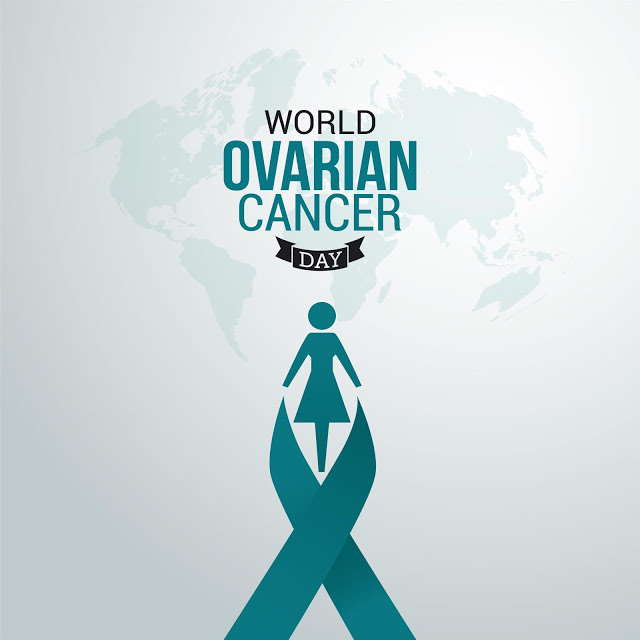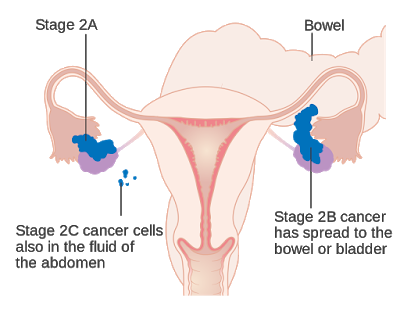 |
| 3 Types Of Ovarian Cancer Every Woman Should Know About |
According to the American Cancer
Society, approximately 21,750 women in the U.S. will get a new diagnosis of
ovarian cancer. Ovarian cancer ranks fifth in cancer deaths among women. It
accounts for more deaths than any other cancer of the female reproductive
system. Although ovarian cancer commonly affects older women, it can occur in
young women and even teens. Therefore, learning about this type of cancer is
necessary for every woman.
There are three types of ovarian
cancer. While each woman has different symptoms and signs of cancer, knowing
the similarities and differences between these three types of ovarian cancer
can be helpful.
The ovary is a reproductive organ
in which eggs are produced along with female and male hormones called estrogen,
progesterone, testosterone. So, why is this organ affected by three different
types of cancer?
According to the American Cancer
Society (ACS), the cause is that the ovaries are made of three main types of
cells that can each develop tumors. Stromal cells keep the ovaries together and
produce estrogen and progesterone. Epithelial cells make up the surface of the
ovaries, and germ cells create eggs, and stromal cells keep the ovaries
together.
However, according to emerging
science, certain types of ovarian cancers can start in the fallopian tubes.
Scientists still don’t know the exact cause of it but they are continuing to
study how this occurs.
3 Types Of
Ovarian Cancer
Germ Cell
Ovarian Cancer
Germ
cell ovarian cancer occurs in the egg-producing cells. This type makes up
less than two percent of all ovarian cancers. This type of cancer usually
affects young women and even girls. Dysgerminoma is the most common ovarian
germ cell cancer which usually occurs in women in their teens and 20s. Another
ovarian germ cell cancer is called immature teratoma and it often occurs in
girls younger than 18. Scientists still don’t fully understand why this type of
cancer occurs in young women and girls. It might be due to the fact that these
cells are more active in younger women.
Epithelial
Ovarian Cancer
Epithelial ovarian cancer starts
in the ovarian epithelium. The Mayo Clinic reports that nearly 90 percent of
ovarian cancer cases are caused by this type of cancer. Serous carcinomas are
the most common kind of epithelial ovarian cancer.
Stromal Ovarian
Cancer
Stromal ovarian cancer is the
rarest type of ovarian cancer making up approximately one percent of ovarian
cancers. It occurs in the ovarian tissue that contains hormone-producing cells
and is often recognized at an earlier stage. In fact, these tumors can be
present in the ovary and grow for a long time without any manifestations. Any
type of stromal tumors can release the female hormone called estrogen. This is
important because it can cause visible symptoms of ovarian cancer.
 |
| 3 Types Of Ovarian Cancer Every Woman Should Know About |
6 Common
Symptoms Of Ovarian Cancer
In most cases, ovarian cancers
don’t cause pain and don’t provoke enough noticeable symptoms unless tumors
become too large. However, ovarian cancers often manifest themselves with non-specific
symptoms that can also occur due to a lot of things that are not linked to
cancer:
1. Feeling Full Quickly When You Eat
2. Bloating Or Abdominal Swelling
3. Weight Loss For Unknown Reasons
4. Stomach Discomfort Or Pain
5. Frequent Urge To Urinate
6. Changes In Bowel Movements Such As Diarrhea Or Constipation
Epithelial ovarian cancers that
are most common most likely provoke these non-specific symptoms. The other two
less common types are at least more likely to cause more attention-grabbing
signs. If you notice all of these symptoms, it’s important to visit your gynecologist as soon as possible.
Some kinds of ovarian germ cell
cancer, particularly dysgerminomas, can become large before being diagnosed,
which can cause abdominal pain. They can provoke irregular bleeding as well.
Unusual vaginal bleeding is probably
the most common sign of stromal ovarian cancer due to excess estrogen. Also,
stromal tumors can produce hormones testosterone leading to amenorrhea and
hirsutism.
Ovarian
Cancer Treatment
Treatment
may vary depending on the stage and type of cancer. The main treatment for
ovarian cancer is surgery. If the cancer is in only one ovary, surgery might
only require removing that ovary and fallopian tube. However, if cancer has
spread to both ovaries, a surgeon will remove them both along with the fallopian
tubes. In addition to surgery, doctors might recommend chemotherapy to kill
cancer cells that can remain after surgery.
